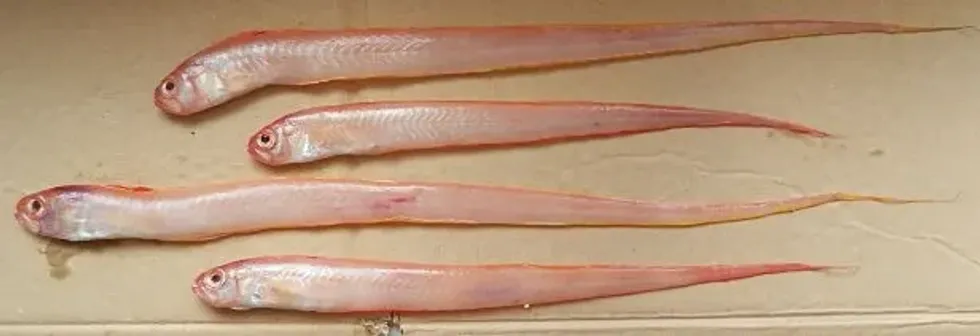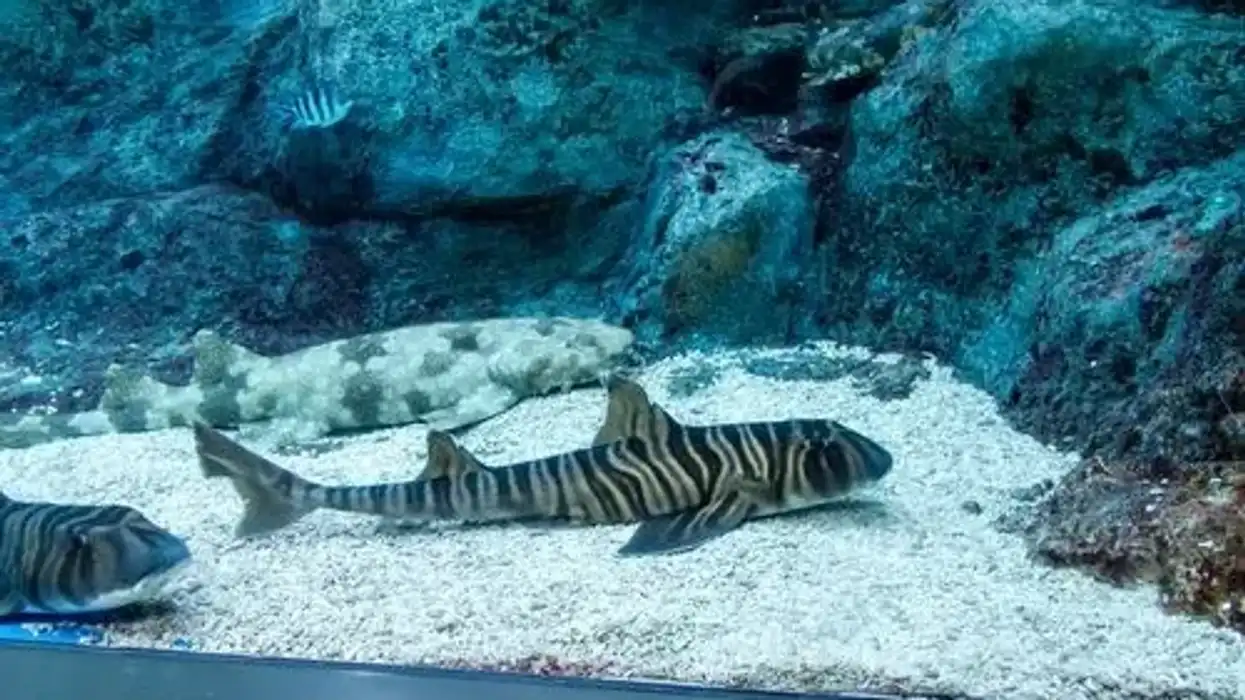The bandfish is a type of fish that falls under the Cepolidae family and the Actinopterygii class. This marine fish comes in a variety of bandfish colors such as red, pink, orange, and yellow.
It mainly feeds on zooplankton. This fish has dorsal and anal fins that run concurrently across its body alongside the caudal fin.
The dorsal fin is pretty large in shape. Some common names that you may recognize for the bandfish include the red bandfish, the crested bandfish, and the Australian bandfish.
You will not find these fish in most reef aquariums, however, with the right provisions and resources they could stay in normal aquariums. There is very little verifiable data that is easily accessible that can corroborate the exact weight of a bandish.
In terms of distribution, these marine species can be found in different parts of the world. In terms of their biology, a lot is left to be discovered and many people are still unaware of this very special marine species.
If you liked reading information about a bandfish, you should check out these neon goby facts and round goby facts for more.
Bandfish Interesting Facts
What type of animal is a bandfish?
The bandfish is a type of perciform or ray-finned fish, that belongs to the family Cepolidae. These fishes are marine fishes that are caught in the ocean. They burrow themselves in sandy or muddy sea beds and burrow in the ground. There are three types of genus found under the family Cepolidae, which are Cepola, Acanthocepola, and Owstonia.
What class of animal does a bandfish belong to?
The bandfish is a type of fish that belongs to the Actinopterygii class. The Cepolidae family has 21 species that fall under it. All of these fish fall under the genus Owstonia, Cepola, and Acanthocepola. These fish prefer to swim in shallow waters.
How many bandfish are there in the world?
There is not enough verifiable data to accurately prove how many bandfish are currently present in the world.
Where does a bandfish live?
Bandfishes are marine fishes that are found most commonly in the sea. In terms of the distribution of these fish, they can be found in Southern Australia, New Zealand, the Indo-West Pacific region, the Persian Gulf, the Gulf of Oman, the Gulf of Carpenteria, the Indo-Malayan region, the Mediterranean, and a range of places in the East-Atlantic.
What is a bandfish's habitat?
In terms of the distribution of their habitat, they are mainly caught in muddy habitats and sandy areas with soft sediments. Then these fish build vertical burrows within the bandfish habitat in order to sustain themselves.
In terms of the depth to which they swim in the sea, although they prefer to swim at shallower depths, some have even been spotted more than 1640 ft (500 m) below the surface. More commonly, members of the bandfish family will be present within 230 ft (70.1 m) from the surface.
Who do bandfish live with?
These fishes can be found living in large colonies or schools along with other bandfish. Although bandfishes live together in groups, they generally have their own individual burrow.
How long does a bandfish live?
Little is known about the lifecycle, but it is assumed that they live for more or less two to four years.
How do they reproduce?
There is not a lot of information on the reproductive process that the bandfish follows. However, we do know that they tend to reside in groups during important seasons such as hibernation and mating season. They also give birth to pelagic eggs.
What is their conservation status?
Some among the 21 species of bandfish that are found under this family are Not Listed, like most of the species of the Acanthocepola genus. Some are listed as Least Concern by the International Union for Conservation of Nature, like the Red bandfish (Cepola macrophthalma), or Acanthocepola abbreviata.
Many of the rest are listed as Data Deficient, like Owstonia nigromarginata, Large-eyed bandfish (Owstonia macrophthalma), or Guinean bandfish (Cepola pauciradiata).
Bandfish Fun Facts
What do bandfish look like?

Its extremely long based dorsal fin, as well as its anal fin, are conjoined with the caudal fin. They have large eyes as well as a large oblique mouth.
They have a single row of small teeth at the bottom of their mouth as well as an additional set of curved teeth at the bottom of their jaw, near the mouth. The dorsal and anal fins extend throughout the entire length of their body. The bandfish color is mainly a shade of pink, red, orange, or yellow.
How cute are they?
This marine species is thought to be cute by many, due to its slender body that is very ribbon like. Some common types of bandfish include the crested bandfish, the red bandfish, the black spot bandfish, and the Australian bandfish.
How do they communicate?
The ways that the bandfish communicates are through chemical and tactile communication, and visually. They also communicate through vibrations.
How big is a bandfish?
The length and overall size of a bandfish can vary depending on its species and its type. There are large variations in length even in between species, which makes it difficult to assess the average size of a bandfish.
Generally, the length of a bandfish lies somewhere between 10.6-31.5 in (27-80 cm). To compare for scale, the size of a Patagonian toothfish is around 90 in (2.3 m), which would be massive in comparison to a small-sized bandfish.
How fast can a bandfish swim?
The exact speed of a bandfish is not known. However, they are able to move at a steady pace.
In terms of their speed, there are still a lot of questions that evolutionary biology has to answer. The killer whale is thought to be one of the fastest swimmers in the ocean, but the speed of a bandfish doesn't come anywhere near them.
How much does a bandfish weigh?
There is still a large amount of information that is still left to be uncovered related to fish that fall under the family of bandfish. According to some estimates by researchers, some bandfish that have previously been caught have weighed between 0.2-0.44 lb (90.7-200g).
In comparison to the conger eel, which weighs on an average of 159 lb (72.1 kg), these fishes are minuscule.
What are the male and female names of the species?
There are no separate sex-specific terms that are used to differentiate between male and female bandfish.
What would you call a baby bandfish?
A baby bandfish may often be referred to as a fry, a baby, an egg, a larva, or even a pupa before they turn into an adult. Little is known about the complete lifecycle of these marine fishes.
What do they eat?
These fishes tend to eat zooplankton and other types of plankton. Their food taste is not very varied, and planktons tend to be their main food source.
Are they poisonous?
There is no verifiable evidence to prove that these ribbon-like fish are poisonous or dangerous to anyone aside from their prey. Due to their size, they are not a potential threat to humans.
Would they make a good pet?
Since these fishes are marine species, it is not recommended that they be kept in captivity. It might be hard to upkeep this species due to their dietary needs, which mainly include plankton. They also prefer to live in burrows in the sea, which is not easy to create in an aquarium.
Did you know...
Bandfishes belong to the phylum Chordata.
Some are known to fall prey to hagfishes due to their size.
Different types of bandfish
Some common names of different bandfish include the red bandfish, the crested bandfish, and the Australian bandfish. The red bandfish (Cepola macrophthalma) is caught in a range of places across the Eastern Atlantic, even coming close to Senegal in the south and all the way up north in the British isles.
The crested bandfish species are caught mainly in the Western Pacific, in areas near Australia and southern Taiwan. The distribution of the Australian bandfishes is mainly in the south around Australia.
What is special about the bandfish?
There are a lot of things that are special about this fish. Firstly, they have really large eyes, which make their head seem distinct from their body.
The undulating motion that they make when they swim makes them mesmerizing to look at. Due to the fact that their dorsal fins run through the length of their entire body, this fish can almost be mistaken for an eel.
Here at Kidadl, we have carefully created lots of interesting family-friendly animal facts for everyone to discover! For more relatable content, check out these Lambchop rasbora and pigfish pages.
You can even occupy yourself at home by coloring in one of our free printable bandfish coloring pages.









